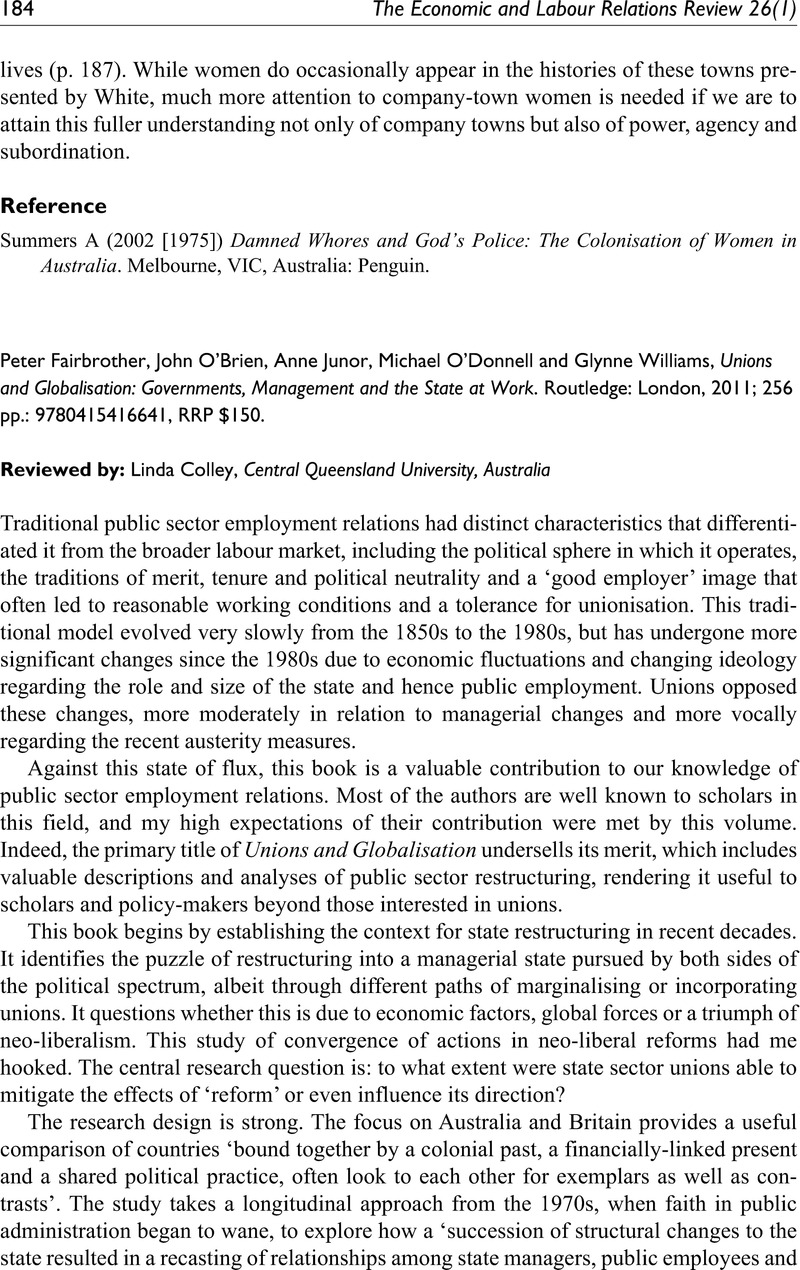No CrossRef data available.
Article contents
Peter Fairbrother, John O’Brien, Anne Junor, Michael O’Donnell, Glynne Williams, Unions and Globalisation: Governments, Management and the State at Work. Routledge: London, 2011; 256 pp.: 9780415416641, RRP $150.
Review products
Peter Fairbrother, John O’Brien, Anne Junor, Michael O’Donnell, Glynne Williams, Unions and Globalisation: Governments, Management and the State at Work. Routledge: London, 2011; 256 pp.: 9780415416641, RRP $150.
Published online by Cambridge University Press: 01 January 2023
Abstract
An abstract is not available for this content so a preview has been provided. Please use the Get access link above for information on how to access this content.

- Type
- Book reviews
- Information
- Copyright
- Copyright © The Author(s) 2015


